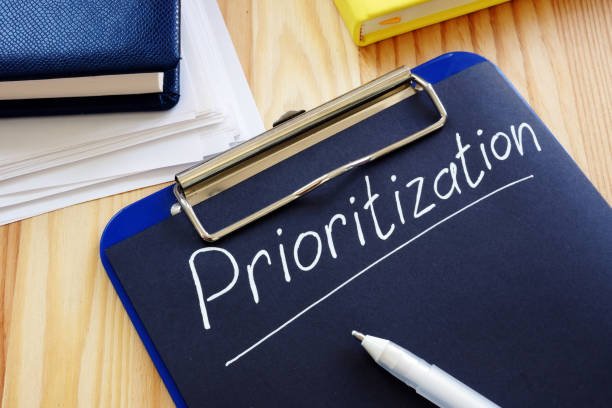In the fast-paced world of marketing and branding, staying ahead of the competition requires innovative strategies that can set your brand apart. One such strategy that has gained prominence in recent years is the I2I (Ideation to Iteration) strategy. This comprehensive guide of Mohammed Bin Tarjim will walk you through the entire process of implementing the I2I strategy for unprecedented branding success.
1. Ideation: The Birth of Innovation

Ideation is the first step in the I2I strategy, where creativity takes center stage. This phase involves generating fresh and unique ideas that will form the foundation of your branding efforts.
Brainstorming Sessions
Begin by assembling a diverse team of creative minds. The more diverse the team, the more varied and innovative the ideas will be. Conduct brainstorming sessions where team members are encouraged to think outside the box. These sessions can be in-person or virtual, depending on the team’s location.
Market Research
To ensure that your ideas are grounded in reality, conduct thorough market research. Learn your target audience’s preferences, pain points, and aspirations. Look for gaps in the market that your brand can fill.
Competitor Analysis
Study your competitors closely. Analyze their branding strategies, strengths, weaknesses, and customer feedback. As a result, you will be able to identify opportunities for differentiation and innovation.
Customer Feedback
Learn more about your existing customers by engaging with them. Conduct surveys, interviews, and social media polls to understand their perception of your brand and what improvements they’d like to see.
2. Prioritization: Nurturing the Best Ideas

Once you have a treasure trove of ideas for the I2I strategy, it’s time to prioritize them based on their feasibility, alignment with your brand identity, and potential impact.
Idea Scoring
Create a scoring system for objectively evaluating each idea. Consider factors such as alignment with brand values, cost of implementation, potential ROI, and market demand. Assign scores to each idea to rank them.
SWOT Analysis
Conduct a SWOT (Strengths, Weaknesses, Opportunities, Threats) analysis for each prioritized idea. This will provide a clearer picture of each idea’s potential and potential risks.
Pilot Testing
Before committing to a full-scale implementation, consider pilot testing the most promising ideas. This allows you to gather real-world data and user feedback to refine and validate your concepts.
3. Planning: Turning Ideas into Action

Goal Setting
Define clear, measurable objectives for each idea. What do you want to achieve? Whether it’s increased brand awareness, higher conversion rates, or improved customer satisfaction, make sure your goals are specific and attainable.
Resource Allocation
Determine the budget, human resources, and technology required for each idea. Allocate resources judiciously to ensure that your plans are executable within your constraints.
Timeline
Develop a timeline for each idea, breaking down the implementation into manageable phases. Establish milestones and deadlines to track progress effectively.
Risk Mitigation
Identify potential obstacles and risks associated with each idea. Develop contingency plans to address these challenges and minimize their impact on your branding efforts.
4. Execution: Bringing Your Ideas to Life

The execution phase is where your planning and preparation pay off for the I2I strategy. It’s time to put your ideas into action and create a memorable brand experience.
Cross-Functional Collaboration
Ensure seamless collaboration between different departments and teams involved in the execution process. In order for a successful implementation to occur, effective communication is essential.
Quality Control
Maintain a strict focus on quality throughout the execution phase. Regularly review progress against your predefined goals and standards to ensure that you’re on the right track.
Brand Consistency
Consistency is crucial for building a strong brand identity. Ensure that every element of your execution aligns with your brand’s values, tone, and visual identity.
Customer Engagement
Engage with your customers during the execution phase. Share teasers, updates, and behind-the-scenes content to build anticipation and excitement around your brand’s innovations.
5. Evaluation and Iteration: Learning from Experience

After the launch of your branding initiatives, it’s essential to continuously evaluate their performance according to the I2I strategy and be prepared to make improvements through iteration.
Data Analysis
Leverage data analytics tools to monitor the performance of your branding efforts. Track key metrics such as website traffic, conversion rates, social media engagement, and customer feedback.
A/B Testing
Implement A/B testing to compare different variations of your branding strategies. This helps you identify what works best and fine-tune your approach accordingly.
Customer Feedback
Continue to gather and analyze customer feedback post-launch. Are your customers satisfied? What can be improved? Use this feedback to inform your iteration process.
Agile Approach
Embrace an agile approach to branding. Be open to making changes and adaptations based on real-time data and market dynamics. Your branding strategy should evolve with your audience’s preferences.
In conclusion, the I2I strategy, from Ideation to Iteration, provides a comprehensive framework for unprecedented branding success. By fostering creativity, prioritizing the best ideas, meticulous planning, flawless execution, and continuous evaluation and iteration, you can create a brand with an I2I strategy that not only stands out but also evolves with the ever-changing market landscape. Remember that successful branding is an ongoing journey, and the I2I strategy is your roadmap to navigate it with finesse.

